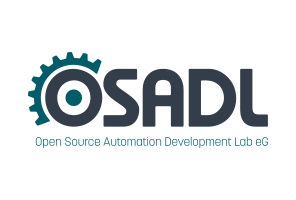Dates and Events:
|
OSADL Articles:
2023-11-12 12:00
Open Source License Obligations Checklists even better nowImport the checklists to other tools, create context diffs and merged lists
2022-07-11 12:00
Call for participation in phase #4 of Open Source OPC UA open62541 support projectLetter of Intent fulfills wish list from recent survey
2022-01-13 12:00
Phase #3 of OSADL project on OPC UA PubSub over TSN successfully completedAnother important milestone on the way to interoperable Open Source real-time Ethernet has been reached
2021-02-09 12:00
Open Source OPC UA PubSub over TSN project phase #3 launchedLetter of Intent with call for participation is now available |
Real Time Linux Workshops
1999 - 2000 - 2001 - 2002 - 2003 - 2004 - 2005 - 2006 - 2007 - 2008 - 2009 - 2010 - 2011 - 2012 - 2013 - 2014 - 2015
14th Real Time Linux Workshop, October 18 to 20, 2012 at the Department of Computer Science, University of North Carolina at Chapel Hill
Announcement - Call for papers (ASCII) - Hotels - Directions - Agenda - Paper Abstracts - Presentations - Registration - Abstract Submission - Sponsors - Gallery
Managing Low Latency in Paravirtualized Virtual Machines
Adam Lackorzynski, TU Dresden
Operating systems such as Linux are increasingly used for real-time work due to their combination of versatility and offering of low event latency. When virtualizing such a system, for example, to consolidate multiple different systems into a single host, the required latency constraints must still be fulfilled. Consequently the hypervisor as well as the virtual machine monitor must be designed in a way that the virtual machine does not block unduly long to violate latency constraints because of communication with the virtual machine monitor or other host system services.
Using embedded systems virtualization requires the paravirtualization approach as full system virtualization is not yet available. Typically paravirtualization approaches are coupled more tightly with the host system by using operating system interfaces. For example, the creation and destruction of address spaces must be done by the host kernel and thus the paravirtualized parts of the virtual machine must use hypervisor calls for handling address spaces. However, creating and especially destroying address spaces can be time costly and thus have a negative impact on the event latency of the virtual machine. The host adaption of a virtual machine must therefore never let the virtual machine block unduly long in such hypercalls. Nevertheless address spaces must be managed and the calls must be done. Putting those in a different host thread within the virtual machine turned out to have problems, for example, because the thread needs to have a lower host priority which in turn leads to unbound resource usage.
The paper will detail on those observations and describe a possible solution that maintains a low event priority in the system.




